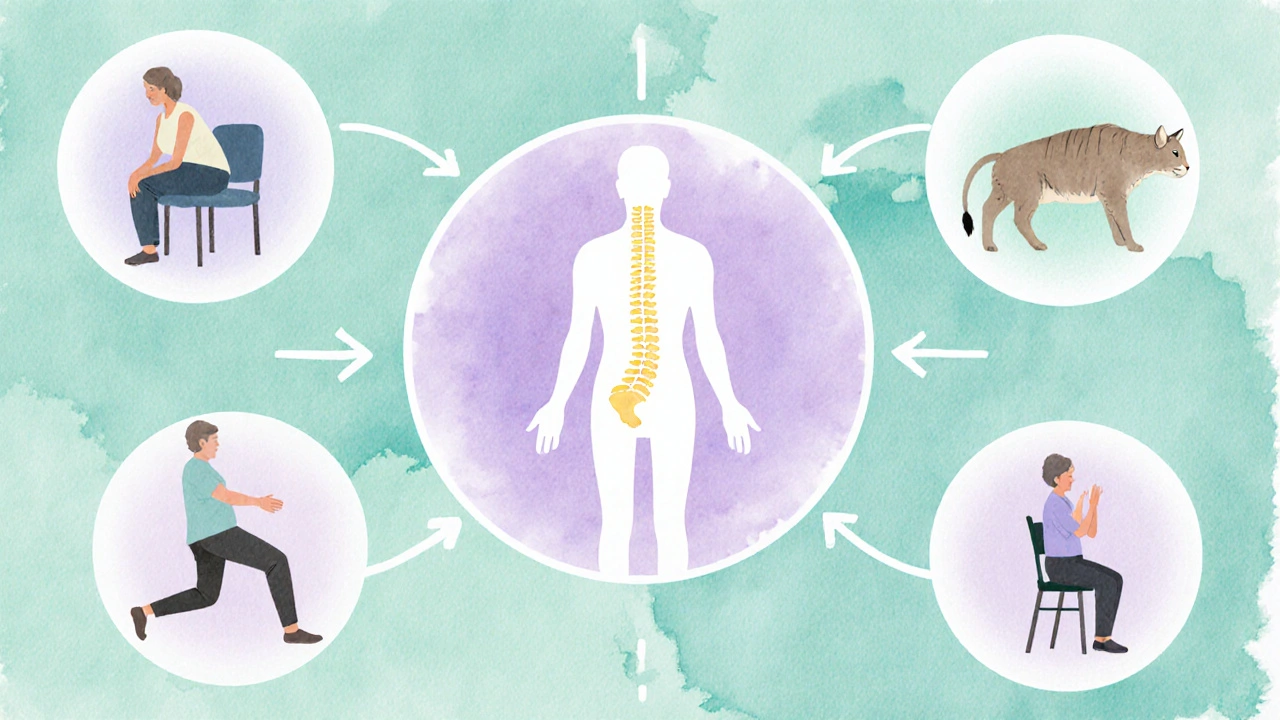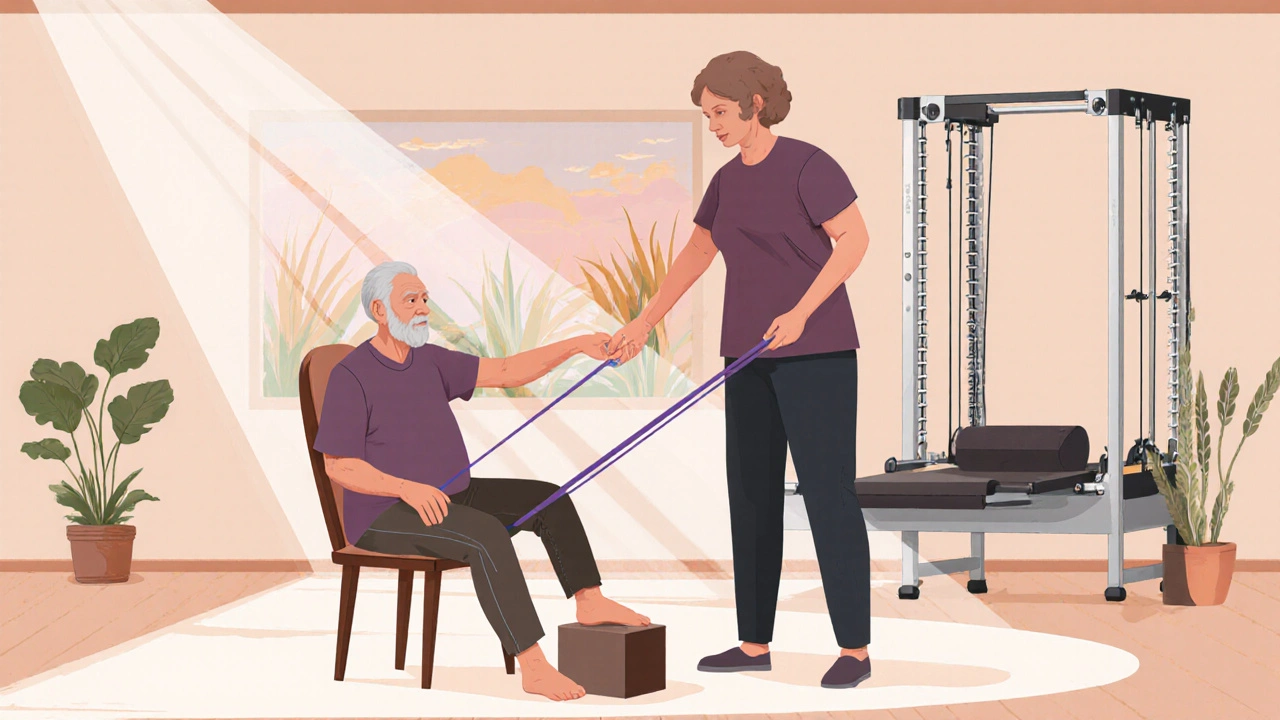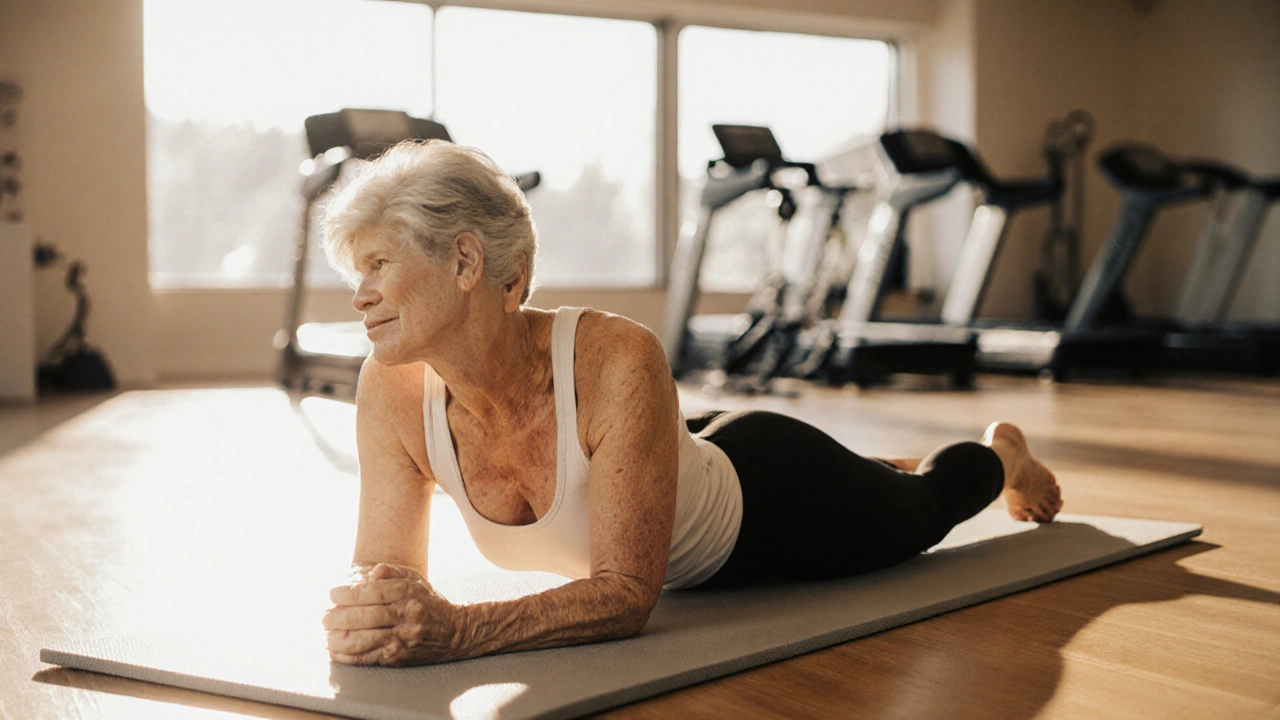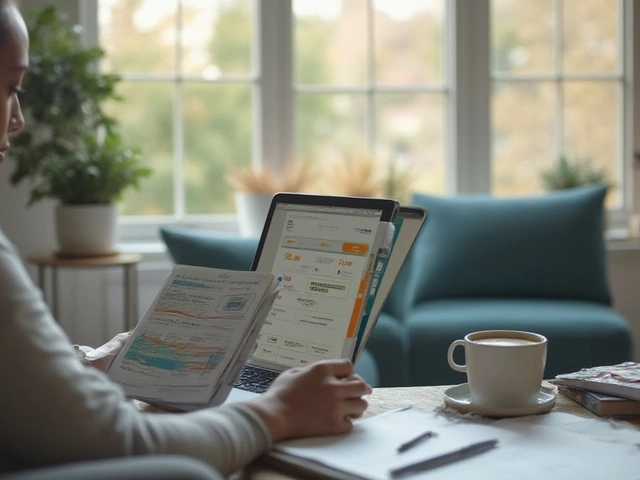Why Pilates is Catching Attention Among Arthritis Sufferers
When it comes to staying active with Pilates is a low‑impact exercise system that emphasizes core strength, flexibility, and mindful breathing, many arthritis sufferers find a gentle yet effective path to relief. Unlike high‑impact cardio that can aggravate joint inflammation, Pilates offers a controlled environment where movement is intentional and supportive. If you’ve been searching for a routine that eases pain without compromising strength, you’re in the right place.
Understanding Arthritis and Its Daily Challenges
Arthritis is a group of conditions that cause inflammation, stiffness, and pain in joints. Whether you’re dealing with osteoarthritis - the wear‑and‑tear form that usually appears after 50 - or rheumatoid arthritis, an autoimmune attack on joint lining, the result is often reduced mobility and decreased quality of life. Daily tasks like gripping a mug, climbing stairs, or even typing can become sources of discomfort.
Because the disease attacks the joint’s protective cartilage, preserving the surrounding muscles becomes crucial. Strong muscles act like shock absorbers, reducing the force that reaches the inflamed joint surface. This is where low‑impact exercise is any activity that minimizes stress on joints while still providing cardiovascular and muscular benefits shines. Pilates fits squarely into this category.
Core Strength: The Foundation for Joint Stability
One of the hallmarks of Pilates is its focus on the core strength is the combined power of abdominal, back, pelvic, and hip muscles that stabilizes the spine and pelvis. A solid core reduces the wobble that forces joints to compensate with inefficient movements. For arthritis patients, this means less strain on the knees, hips, and hands during everyday activities.
Flexibility and Range of Motion
Joint stiffness is a common complaint in arthritis. Flexibility is the ability of muscles and connective tissue to lengthen without injury training gently stretches the capsule around the joint, encouraging synovial fluid circulation. Better lubrication means reduced friction and, over time, less pain.

Balance: Preventing Falls and Protecting Joints
Arthritis can impair proprioception - the body’s sense of where it is in space - leading to unsteady gait. Balance is the skill of maintaining the body’s center of gravity within its base of support exercises incorporated in Pilates, such as single‑leg stretches or seated leg lifts, train the neuromuscular system to react more efficiently, keeping you steadier on your feet.
Pain Management Through Mindful Movement
Beyond the physical, Pilates promotes pain management is a multidisciplinary approach that combines physical, psychological, and lifestyle strategies to reduce perceived pain. The emphasis on controlled breathing and concentration activates the parasympathetic nervous system, which can lower the body’s pain signaling pathways. Many arthritis patients report a noticeable drop in flare‑ups after just a few weeks of consistent practice.
How Pilates Aligns with Physical Therapy Goals
Physical therapists often prescribe exercises that strengthen surrounding musculature without stressing the joint itself. Physical therapy is a rehabilitative discipline that uses movement, manual techniques, and education to restore function and Pilates mirrors many of those principles. In fact, many clinicians integrate Pilates mats or reformers into their treatment plans because the progression from basic to advanced moves is clear and measurable.
Specific Benefits You’ll Notice
- Reduced joint pain - gentle loading improves cartilage nutrition.
- Increased core strength is the combined power of abdominal, back, pelvic, and hip muscles that stabilizes the spine and pelvis, stabilizing the entire kinetic chain.
- Enhanced flexibility is the ability of muscles and connective tissue to lengthen without injury, leading to smoother joint motion.
- Better balance is the skill of maintaining the body’s center of gravity within its base of support, lowering fall risk.
- Improved mood and lower stress levels thanks to focused breathing.

Safe Pilates Moves for Arthritis Beginners
Below is a simple, joint‑friendly routine you can try at home or in a studio. Keep the pace low, focus on alignment, and stop if any movement spikes pain.
- Pelvic Tilt (Supine) - Lie on your back, knees bent, feet flat. Gently flatten your lower back against the floor by engaging your core. Hold for 5 seconds, repeat 10‑12 times.
- Modified Cat‑Cow (Tabletop) - On hands and knees, inhale to arch your back (cow) and exhale to round it (cat). Move slowly, maintaining a comfortable range. 8‑10 reps.
- Seated Spine Twist - Sit tall on a chair, feet flat. Inhale, lengthen; exhale, rotate gently to one side, using your opposite hand on the knee for support. Switch sides after 5 breaths.
- Standing Leg Lift (Support) - Stand behind a chair, hold the back for balance. Lift one leg slightly behind you, keeping the knee soft. Lower slowly. 8 reps per leg.
- Arm Circles (Supine or Seated) - Extend arms out to the sides and draw small circles, first forward then backward. This mobilizes shoulder joints without weight bearing. 10 circles each direction.
These moves target the core, improve joint mobility, and can be progressed with resistance bands or a Pilates reformer once you feel comfortable.
Comparing Pilates to Other Arthritis‑Friendly Workouts
| Exercise | Joint Stress Level | Typical Session Length | Main Benefit for Arthritis |
|---|---|---|---|
| Pilates (Mat/Reformer) | Low | 30‑60min | Core stabilization + controlled range of motion |
| Swimming / Aqua Aerobics | Very Low | 30‑45min | Full‑body movement without weight bearing |
| Yoga (Gentle/Hatha) | Low‑Medium | 45‑60min | Flexibility + mindfulness |
| Walking (Flat Surface) | Low‑Medium | 20‑40min | Cardiovascular health + weight control |
While each option has merit, Pilates uniquely blends strength, flexibility, and breath work in a single session, making it a one‑stop solution for many arthritis concerns.
Getting Started: Practical Tips and Common Pitfalls
- Consult Your Doctor or Physical Therapist before beginning any new regimen, especially if you have severe joint damage.
- Start with a certified Pilates instructor who has experience with arthritis or chronic pain.
- Focus on quality over quantity - perfect the alignment before adding repetitions.
- Use props like yoga blocks, cushions, or a resistance band to reduce joint load.
- Avoid deep spinal flexion or hyper‑extension if your back joints are sensitive; keep movements within a comfortable range.
- Track your pain levels in a simple journal - a mild soreness is normal, sharp pain is a sign to stop.
Consistency beats intensity. Even a 15‑minute session three times a week can generate noticeable improvements in joint comfort and overall function.
Frequently Asked Questions
Can I do Pilates if I have both osteoarthritis and rheumatoid arthritis?
Yes, but customize the moves. Osteoarthritis usually affects weight‑bearing joints, so focus on low‑impact mat work. Rheumatoid arthritis can cause flare‑ups, so listen to your body and avoid excessive gripping or high‑intensity resistance during active periods.
How quickly can I expect pain relief from Pilates?
Most beginners notice reduced stiffness after 2‑3 weeks of regular practice. Significant pain reduction typically appears after 6‑8 weeks, especially when paired with proper nutrition and joint‑friendly medication.
Do I need a reformer, or is a mat enough?
A mat is perfectly fine for beginners and can deliver most of the core benefits. A reformer adds spring resistance, which can be useful for later stages when you want to increase strength without adding joint load.
Is Pilates safe during an arthritis flare‑up?
During a flare, stick to very gentle movements and prioritize breathing. Even light stretching can maintain range of motion without worsening inflammation. If pain spikes, pause and consult your healthcare provider.
Can Pilates help with hand arthritis?
Absolutely. Modified hand‑position exercises, like using a small ball for gentle squeezes or performing arm circles with a light resistance band, strengthen the forearm muscles that support the hand joints.
Ready to give it a try? Remember, the power of Pilates lies in consistency, mindful breathing, and respecting your joint limits. With regular practice, you’ll likely notice smoother movement, less pain, and a stronger core that protects your joints for the long haul.







Comments
Karen Ballard
October 13, 2025 AT 21:07 PMPilates truly reduces joint stiffness; the controlled breathing also calms inflammation. 😊
Gina Lola
October 18, 2025 AT 12:14 PMFrom a biomechanical standpoint, Pilates orchestrates a synergistic neuromuscular adaptation that optimizes the kinetic chain without imposing high ground‑reaction forces. The low‑impact nature preserves cartilage integrity while still delivering sufficient stimulus for hypertrophic remodeling of the deep core musculature. Additionally, the breath‑sync component fine‑tunes autonomic balance, which can indirectly dampen inflammatory cytokine release. All of this makes it a pragmatic choice for anyone navigating the constraints of arthritic pathology.
Leah Hawthorne
October 23, 2025 AT 03:21 AMI’ve seen a lot of folks with knee osteoarthritis start with basic pelvic tilts and notice a real boost in joint stability after a few weeks. The key is consistency and keeping the range of motion pain‑free – nothing fancy, just quality reps. Over time the improved core engagement translates to less wobble when you stand up or climb stairs. It’s a low‑risk, high‑reward addition to a broader rehab plan.
Brian Mavigliano
October 27, 2025 AT 18:27 PMWhile emojis sprinkle cheer, the underlying premise that Pilates alone can quell inflammation is a seductive myth. One must interrogate whether the perceived relief stems from neuro‑psychological placebo or genuine musculoskeletal adaptation. In the grand theater of chronic pain, movement is but one actor among many, and to idolize it is to ignore the complex script of immune dysregulation.
Emily Torbert
November 1, 2025 AT 09:34 AMTotally get the excitement about moving more it’s amazing how even a few minutes a day can make joints feel less stiff and mood better
Rashi Shetty
November 6, 2025 AT 00:41 AMThe therapeutic merits of Pilates for arthritic patients are substantiated by both biomechanical theory and clinical observation.
By engaging the deep stabilizing musculature, the regimen creates an intrinsic support system that attenuates deleterious joint forces.
Moreover, the emphasis on diaphragmatic breathing activates parasympathetic pathways, thereby modulating nociceptive signaling.
This duality of mechanical reinforcement and autonomic regulation distinguishes Pilates from generic low‑impact aerobics.
In longitudinal studies, participants have reported a statistically significant reduction in morning stiffness after eight weeks of consistent practice.
The progressive nature of the method allows for incremental load adjustments, which is paramount for individuals with fluctuating disease activity.
Furthermore, the mind‑body integration inherent in Pilates cultivates proprioceptive acuity, reducing fall risk among elderly cohorts.
Practitioners are encouraged to utilize props such as cushions or resistance bands to further minimize joint compression.
It is imperative, however, to obtain professional guidance to ensure proper alignment and avoid compensatory patterns.
When executed with precision, the pelvic tilt and modified cat‑cow exercises serve as gentle mobilizers for the lumbar and sacroiliac regions.
The seated spine twist, performed within a pain‑free range, augments thoracic rotation without imposing axial load on the vertebrae.
Regular adherence to these movements facilitates synovial fluid circulation, promoting nutrient diffusion to cartilage surfaces.
As cartilage metabolism improves, patients often experience diminished reliance on analgesic medications.
It should be noted that while Pilates is broadly beneficial, it does not supplant disease‑modifying therapies prescribed by rheumatologists.
Rather, it functions as an adjunctive modality that synergizes with pharmacologic and nutritional interventions.
Ultimately, the holistic framework of Pilates empowers arthritic individuals to reclaim functional autonomy and enhance quality of life. 😊
Queen Flipcharts
November 10, 2025 AT 15:47 PMWhile the exposition extols Pilates as a panacea, it neglects to acknowledge that indigenous movement traditions have long outperformed imported modalities in our nation’s rehabilitation arsenal. The posited “adjunctive” status merely disguises cultural hegemony, and our healthcare policy should prioritize home‑grown kinetic therapies over foreign imports.
Yojana Geete
November 15, 2025 AT 06:54 AMOh dear, what a splendid tableau of articulated wellness emerges from the mat! The articulation of breath and motion conjures a symphony that soothes the arthritic soul. Yet one must not be fooled by the glittering veneer; diligence and discipline remain the true custodians of health. Pray, let us not dalliance with fancies but commit to the regimen with solemn resolve.
Jason Peart
November 19, 2025 AT 22:01 PMHey Yojana you nailed the vibe! I’m all about the drama and the dedication – just remember to keep those moves gentle on the knees, ok? If you ever feel a twinge, drop the intensity and focus on that deep breathing, it’s a game changer. Keep pushing, and we’ll all get stronger together!
Hanna Sundqvist
November 24, 2025 AT 13:07 PMAll this talk makes me want to try a mat class tomorrow.
Jim Butler
November 29, 2025 AT 04:14 AMIt is incumbent upon us to integrate evidence‑based movement modalities such as Pilates into standard arthritic care pathways; the data corroborate enhancements in proprioception, core stability, and psychosocial well‑being. 🎯 Let us champion interdisciplinary collaboration to ensure patients receive comprehensive, low‑impact exercise prescriptions.